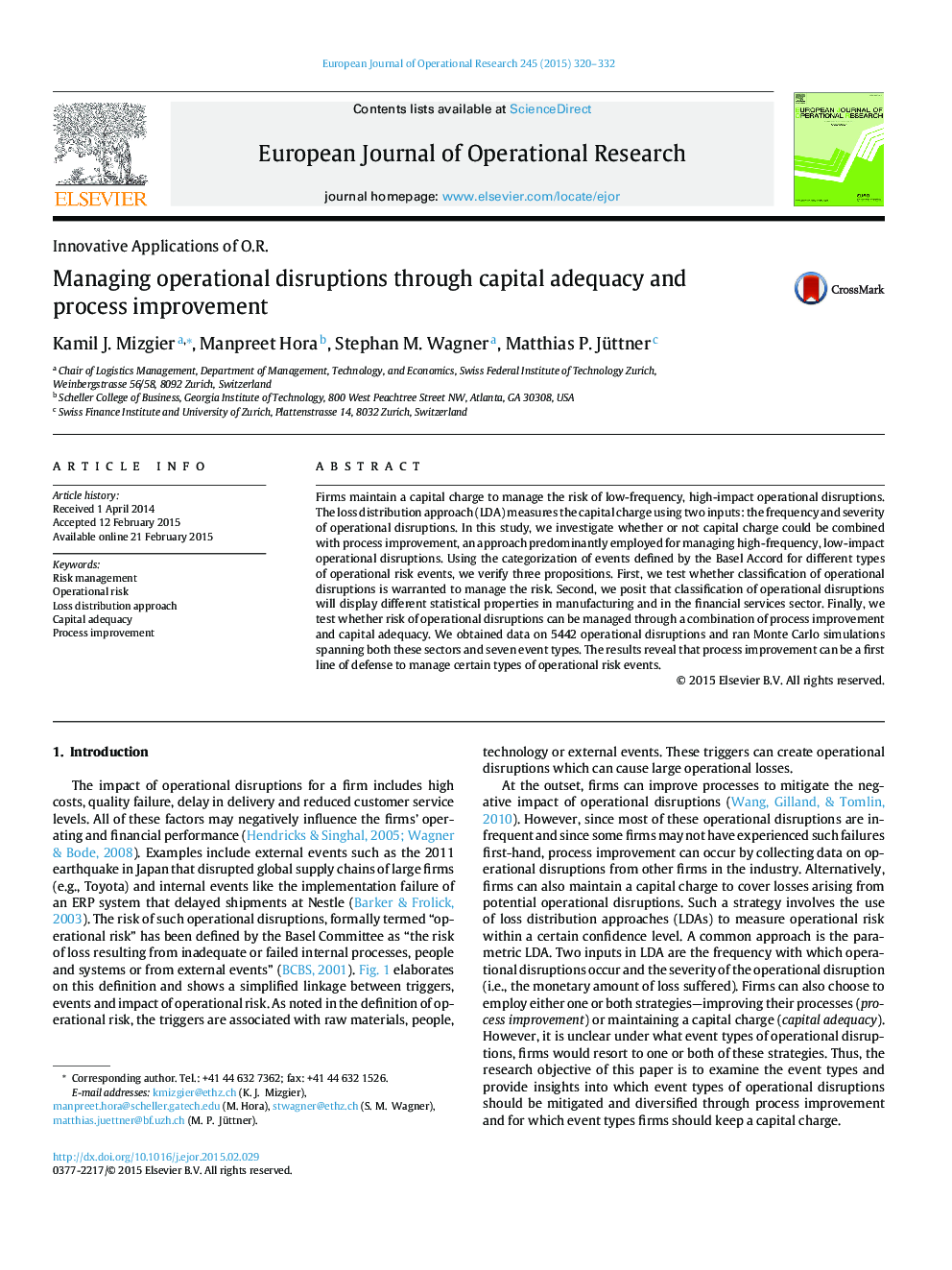| Article ID | Journal | Published Year | Pages | File Type |
|---|---|---|---|---|
| 479563 | European Journal of Operational Research | 2015 | 13 Pages |
•Adopting process improvement or maintaining capital charge are alternatives to cope with operational disruptions.•For quantification we use a loss distribution approach and empirical data from the services and manufacturing sector.•We obtain novel insights concerning how to best mitigate various types of operational risks.•Process improvements are often a first line of defense in case of certain operational risks.
Firms maintain a capital charge to manage the risk of low-frequency, high-impact operational disruptions. The loss distribution approach (LDA) measures the capital charge using two inputs: the frequency and severity of operational disruptions. In this study, we investigate whether or not capital charge could be combined with process improvement, an approach predominantly employed for managing high-frequency, low-impact operational disruptions. Using the categorization of events defined by the Basel Accord for different types of operational risk events, we verify three propositions. First, we test whether classification of operational disruptions is warranted to manage the risk. Second, we posit that classification of operational disruptions will display different statistical properties in manufacturing and in the financial services sector. Finally, we test whether risk of operational disruptions can be managed through a combination of process improvement and capital adequacy. We obtained data on 5442 operational disruptions and ran Monte Carlo simulations spanning both these sectors and seven event types. The results reveal that process improvement can be a first line of defense to manage certain types of operational risk events.
